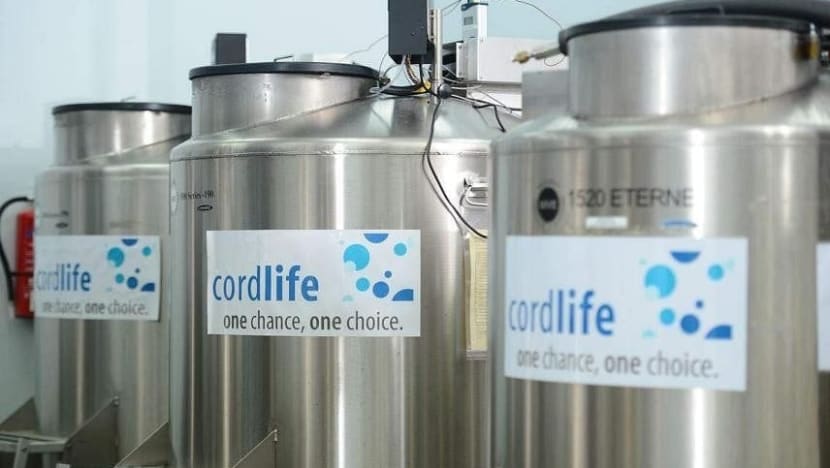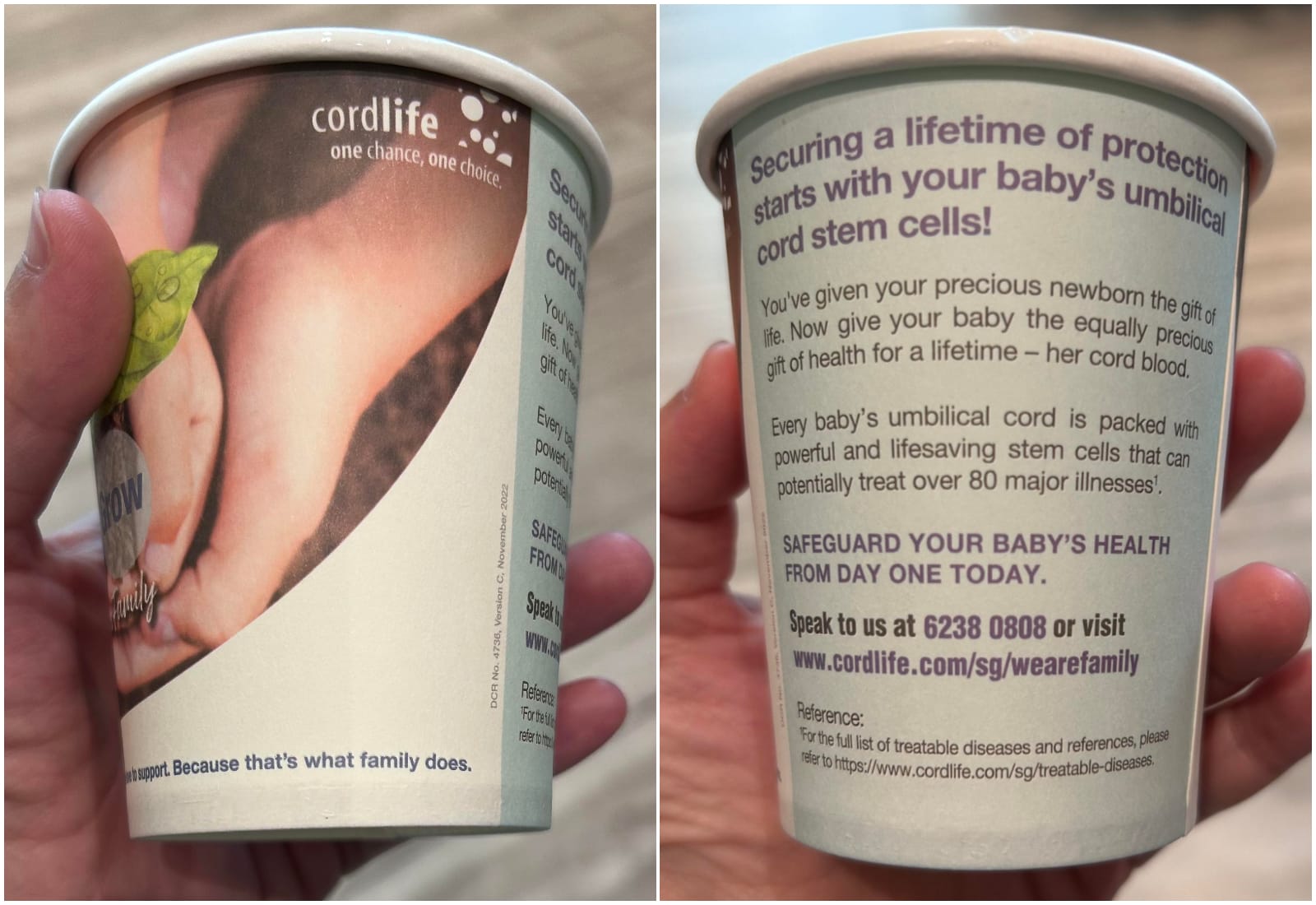Commentary: I chose not to privately bank my baby's cord blood. Here's why
Amid the outrage and frustration of parents affected by Cordlife's lapses, CNA's Charlene Tan looks back at her decision not to do private cord blood banking.


This audio is generated by an AI tool.
SINGAPORE: I recall browsing a Cordlife pamphlet that came in the barrage of brochures shoved into the hands of clueless, first-time pregnant women. That was the first time I had heard of private cord blood banking.
In the months that followed after reading up on it, my husband and I agreed not to bank our baby’s cord blood. That decision may have saved us some heartache.
In November 2023, the Ministry of Health (MOH) said that seven of Cordlife’s 22 storage tanks had been exposed to temperatures above the acceptable limit of -150 degrees Celsius, with about 2,200 cord blood units damaged in one tank.
On Monday (Apr 8), MOH investigation revealed that cord blood units belonging to another 5,300 active clients stored in a second tank and a dry shipper were “non-viable”.
Parents who banked their child’s cord blood with the company have been understandably outraged by this. They had paid to store the blood left from the umbilical cord and placenta, hoping to conserve newborn stem cells that could potentially cure some serious diseases.
Worryingly, the tank incidents were reported to members of Cordlife’s board in February 2023. But customers were kept in the dark.
Even now, some parents are still holding their breath. While the remaining five tanks were assessed to be at low risk, MOH recommended Cordlife test more cord blood units to determine their viability.
IS IT REALLY “BIOLOGICAL INSURANCE”?
The reason I had dismissed private cord blood banking was that it seemed to create anxiety to sell hope.
Marketing materials claim that cord stem cells are about securing your baby’s future or that there’s only "one chance" to protect your child. If the companies have not run afoul of MOH’s advertising regulations for healthcare services, I have to take it that the materials are carefully worded so as not to be considered “exaggerated, false, misleading or deceptive”.
Of the 81 diseases currently listed on Cordlife’s website as potentially treatable with cord blood stem cells, only seven indicate the use of autologous transplants - or using one’s own stem cells. The rest require allogeneic transplants - or using someone else’s stem cells.

In Singapore, experts estimated that the chance of families using privately banked cord blood as between 0.005 per cent and 0.04 per cent, compared to 2.2 per cent in a public bank, according to a 2016 TODAY article.
Were parents oversold the potential for cord blood use during the free consultation they are often pushed towards at medical visits? At least one parent told me they now felt “suckered” into it.
It seems that children might be better protected, their future better secured, if more parents donated to a public cord blood bank instead - something I regret not doing.
PARENTS ONLY WANT WHAT’S BEST
But I understand why some parents sign up for private cord blood banking. After all, parents only want what’s best for their children.
But this makes us susceptible to those using that narrative to sell us stuff - and there is a lot of stuff for sale, from the right food to boost health and the correct toys to enhance development to the best classes to ensure they don’t fall behind their peers. Until reined in in 2019, infant formula manufacturers could make nutritional and health claims in advertisements and use idealised images to suggest intellectual potential or enhanced ability.
Cord blood banking requires minimal effort beyond paying the storage fees, in exchange for some peace of mind - just in case, in the hopes they will never need it.
And even if there are potential applications in treating conditions like childhood autism or cerebral palsy, these have yet to be firmly ascertained. Storing cord blood with this in mind seems akin to cryogenically freezing ourselves in our prime to be awoken in a future where age-related ailments are no more.
PARENTAL GUILT
Is it really about buying hope? Sometimes it feels more like paying to assuage guilt.
On the mummy forums, the sentiment seems to be: What if your child had a condition that could be treated with stem cells but you did not seize the “one chance” even though you could afford it? How could you live with knowing your child suffers due to your inaction?
Guilt is a feeling every pregnant woman and mother knows too well. Everything we did (or did not do) could negatively impact the baby and their future. Did we drink too much coffee or make the “mistake” of giving in to that slice of sashimi? Should we really stop breastfeeding and deny baby this “liquid gold”? Is the baby understimulated or overstimulated?
I remember obsessively noting my first-born’s nap times and plugging it into an Excel sheet to figure out why she was not sleeping as much as the books all said three-month-olds needed for brain development and physical growth. Surely, I was doing something wrong?
It’s a moment of madness I am now both appalled and amused by. I did nothing of that sort for my second child and they both seem fine now.
But the guilt just evolves: Should I be sending them for Chinese lessons now to lessen the shock of primary school? Am I doing them a disservice by not signing them up for sports or music classes during the weekends?
Perhaps the lesson for parents here is to take a step back and be mindful that this obsession with safeguarding our children against every possible adverse event is what opens us up to more unhelpful marketing practices.
Charlene Tan is a senior editor at CNA Digital where she oversees commentaries.



















